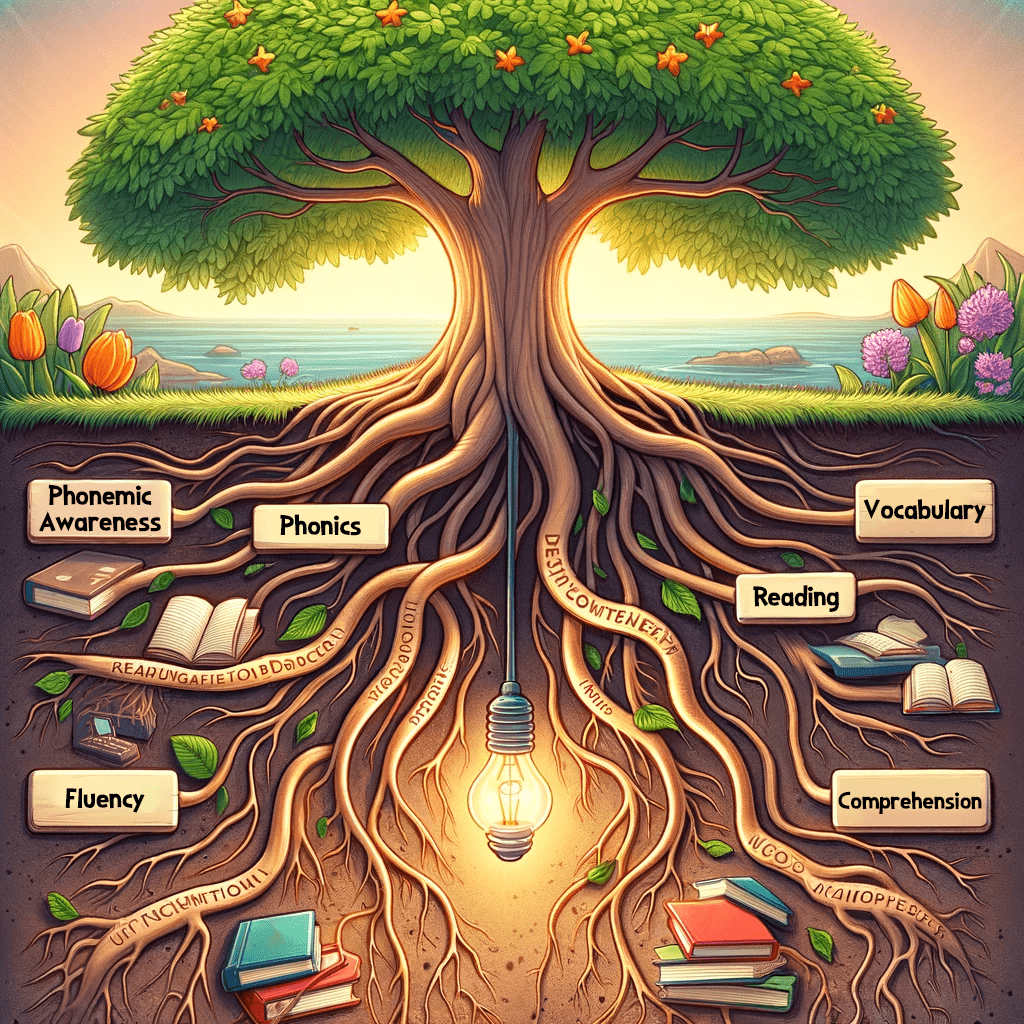
The Science of Reading Curriculum Program: A Proven Blueprint for Literacy Success
The science of reading is a comprehensive framework built upon decades of research from cognitive science, educational psychology, and neurology. It is the synthesis of evidence-based methods that illuminate how individuals learn to read and the best practices for teaching reading, making it a vital part of any science of reading program.Why the Science of Reading Matters
This approach is essential because the science of reading curriculum moves beyond intuition and tradition, grounding reading instruction in methods proven to be effective. It recognizes that reading is not a natural process acquired spontaneously, like speech, but rather a complex skill that requires explicit, systematic teaching of its components. By embracing the science of reading, educators can elevate literacy levels and change the trajectory of students’ lives.Building Strong Foundations with a Robust Science of Reading Program
In the quest for educational excellence, the implementation of a robust science of reading program stands as a cornerstone, pivotal to cultivating proficient readers and informed thinkers in today's rapidly evolving world. This program integrates science of reading resources and science of reading intervention programs, ensuring a comprehensive approach to literacy.
Empowering Every Student with Science of Reading Intervention ProgramsEach child is unique, especially when facing reading challenges. Our science of reading intervention programs are tailored to meet these unique needs, providing support, encouragement, and personalized learning paths. These are not just programs; they're lifelines to literacy breakthroughs.
Fine-Tuning Phonics with the Science of Reading Phonics Program
Phonics is like the secret code of language, and a science of reading phonics program is the key. We focus on systematic, engaging instruction that transforms symbols on a page into a world of stories and knowledge, fostering fluency and comprehension in every young reader.
Designing a Future-Proof Science of Reading CurriculumThe curriculum developed from the science of reading principles is future-proof, characterized by its adaptability and responsiveness. Our science of reading curriculum continually evolves to embrace the latest literacy research and instructional best practices, ensuring education evolves with needs.
Dynamic Science of Reading Activities for Classroom EngagementOur programs are rich in science of reading activities designed to make learning an interactive, hands-on experience that nurtures the reading skills essential for student success. These science of reading activities are built upon the science of reading components, providing dynamic, hands-on experiences for students.
The five components of an effective reading program, as identified by The National Reading Panel, include phonemic awareness, phonics, fluency, vocabulary, and reading comprehension. From a skills perspective, these represent the essential science of reading components.Transformative Literacy Education with the Science of Reading
At Essential Skills, we believe in the transformative power of a well-implemented science of reading program. From foundational literacy skills to advanced literacy development, our programs, enriched with science of reading resources and activities, are dedicated to fostering a literate and informed next generation.In the world of literacy instruction, providing educators with the right science of reading resources is crucial. Our commitment to the science of reading research ensures that our resources, including our science of reading phonics program and other elementary reading programs are based on the science of reading components and built upon the latest insights and best practices.
These science of reading resources empower educators to create engaging and effective learning environments. Our comprehensive elementary reading programs equip teachers with the tools they need to deliver high-quality literacy instruction. We understand that well-prepared educators are at the heart of successful literacy education, and our science of reading resources play a vital role in their mission to provide every student with the foundational literacy skills they need to succeed.
Bridging the Literacy Gap with Science of Reading Intervention ProgramsFor students facing reading difficulties, science of reading intervention programs can be a bridge to literacy success. With a focus on targeted support and personalized learning paths, these programs address the specific needs of each student. By combining science of reading components, such as systematic phonics instruction, with dynamic science of reading activities, our intervention programs provide a holistic approach to literacy development.
Essential Skills' science of reading intervention programs are designed to close the literacy gap and empower students to achieve significant gains in their reading abilities. We believe that every student deserves the opportunity to unlock their reading potential, and our reading intervention programs are designed to make that possible.
Staying Ahead with Science of Reading ResearchOur approach is continually informed by the latest science of reading research. This research guides the development of our science of reading curriculum and intervention strategies, ensuring that we are always at the forefront of educational best practices.

What are some effective science of reading strategies for early learners?
Effective science of reading strategies for early learners include:
Sound games: Activities that help children recognize and manipulate sounds in words, building phonemic awareness.
Decodable books: Texts that align with phonics instruction, allowing students to practice decoding words as they read.
Explicit phonics instruction: Teaching letter-sound relationships in a systematic way.
Word mapping: Helping students connect the letters in words with the sounds they represent.
How does phonics instruction fit into a science of reading program?
Phonics instruction is a central part of a science of reading program. It teaches students the relationships between letters and sounds, allowing them to decode unfamiliar words. Phonics is taught systematically, with students progressing from simple letter-sound relationships to more complex patterns, helping them become fluent readers.
How do science of reading resources address vocabulary development?
Science of reading resources address vocabulary development by:
Teaching word meanings explicitly: Providing activities that focus on word definitions, synonyms, and usage in sentences.
Using context clues: Offering exercises where students learn to infer the meaning of unfamiliar words based on the surrounding text.
Incorporating word walls: Visual tools that display key vocabulary terms, allowing students to see and use the words frequently.
How do science of reading intervention programs support English Language Learners (ELL)?
Science of reading intervention programs support English Language Learners by focusing on explicit instruction in phonemic awareness and phonics, helping them build foundational skills in English. These programs provide structured practice in vocabulary and fluency, helping ELL students improve their language proficiency while building reading skills.
What are some common misconceptions about phonics instruction that science of reading phonics programs address?
Common misconceptions about phonics instruction include the idea that phonics is boring or that it should not be taught explicitly. A science of reading phonics program counters these misconceptions by demonstrating that phonics is an essential, research-based method for teaching reading. The program emphasizes that phonics instruction should be explicit, systematic, and engaging to ensure students develop the decoding skills necessary for fluent reading.